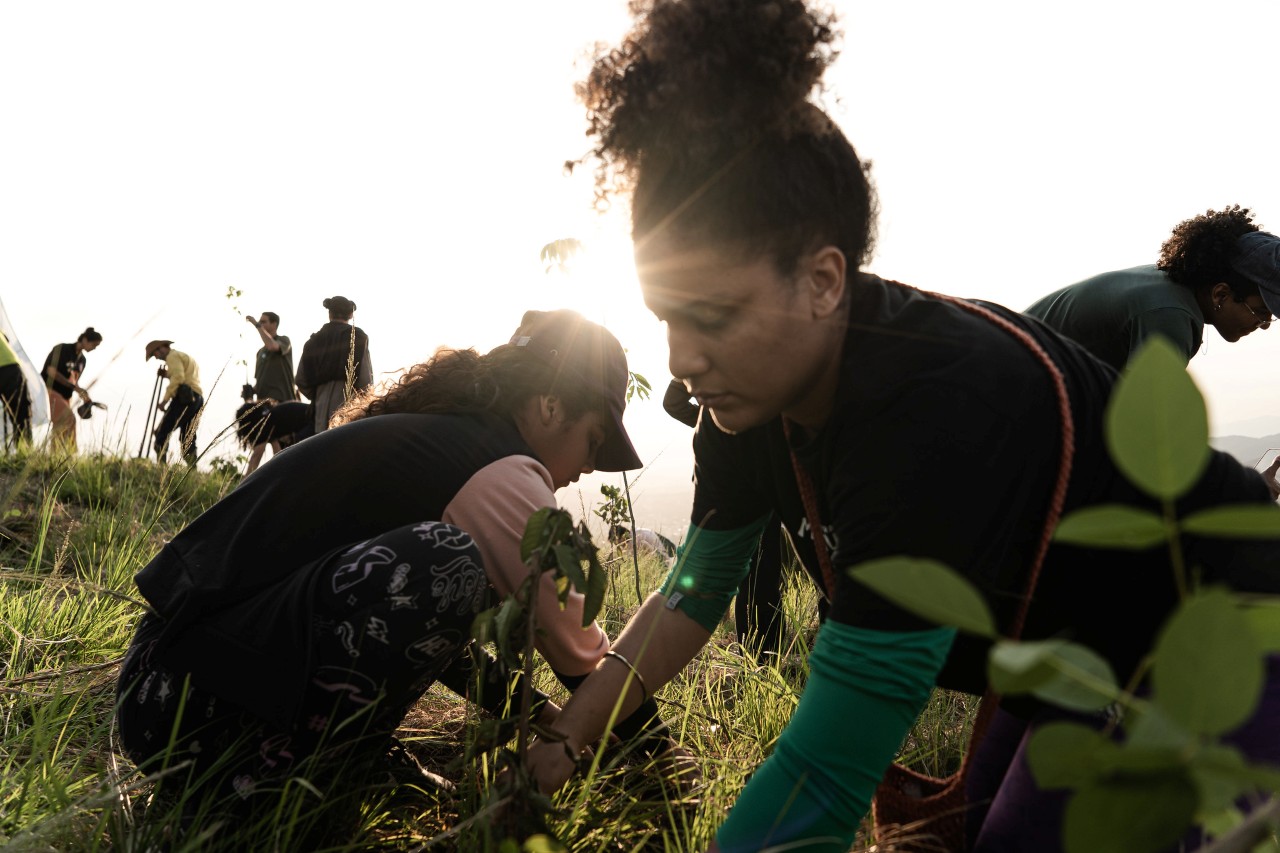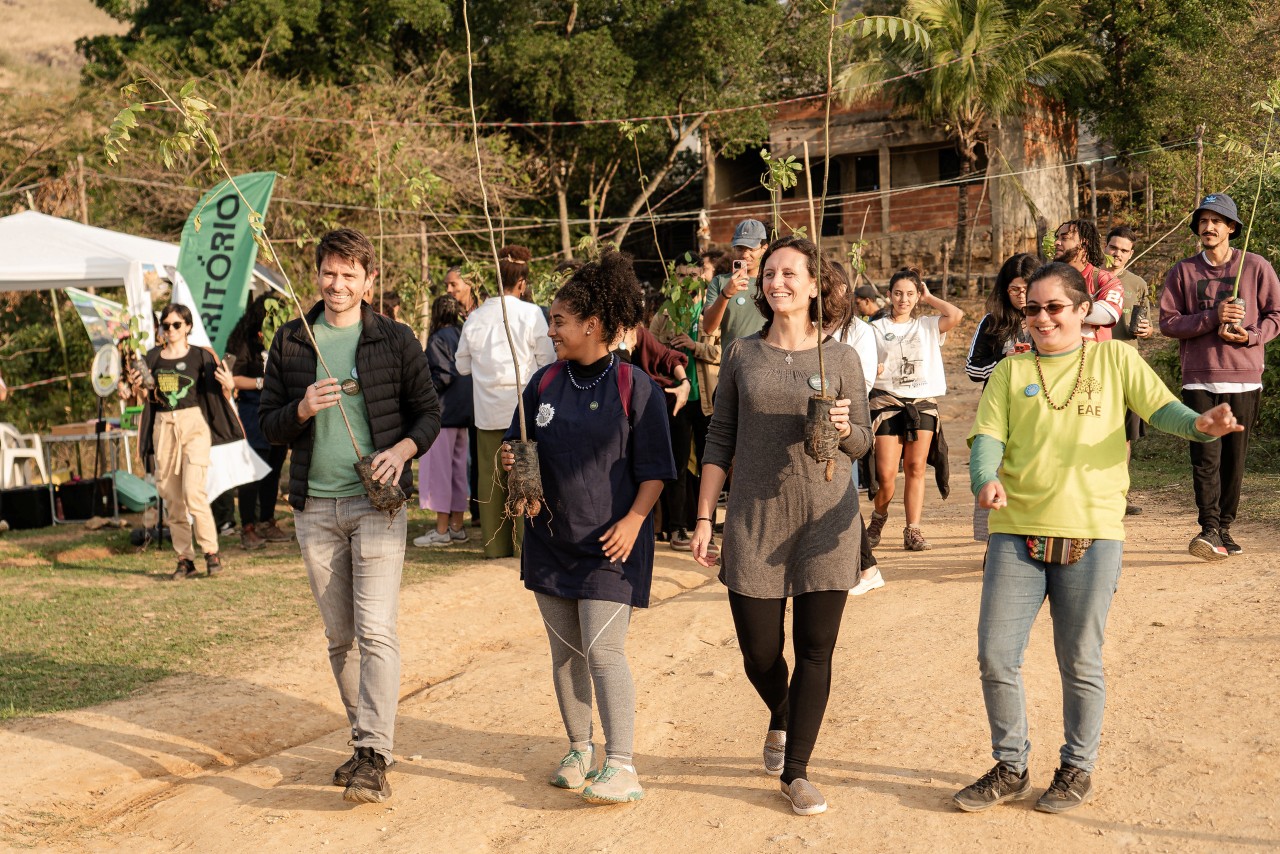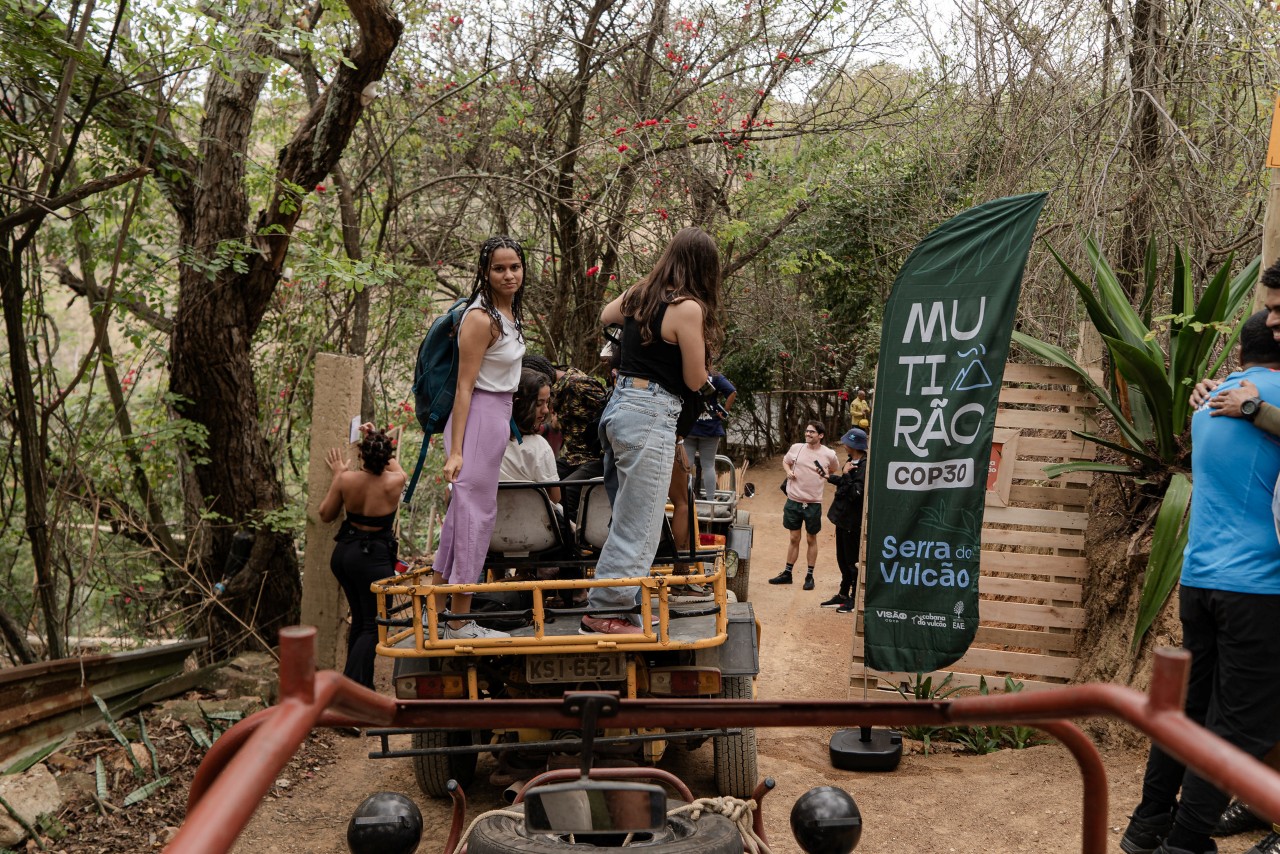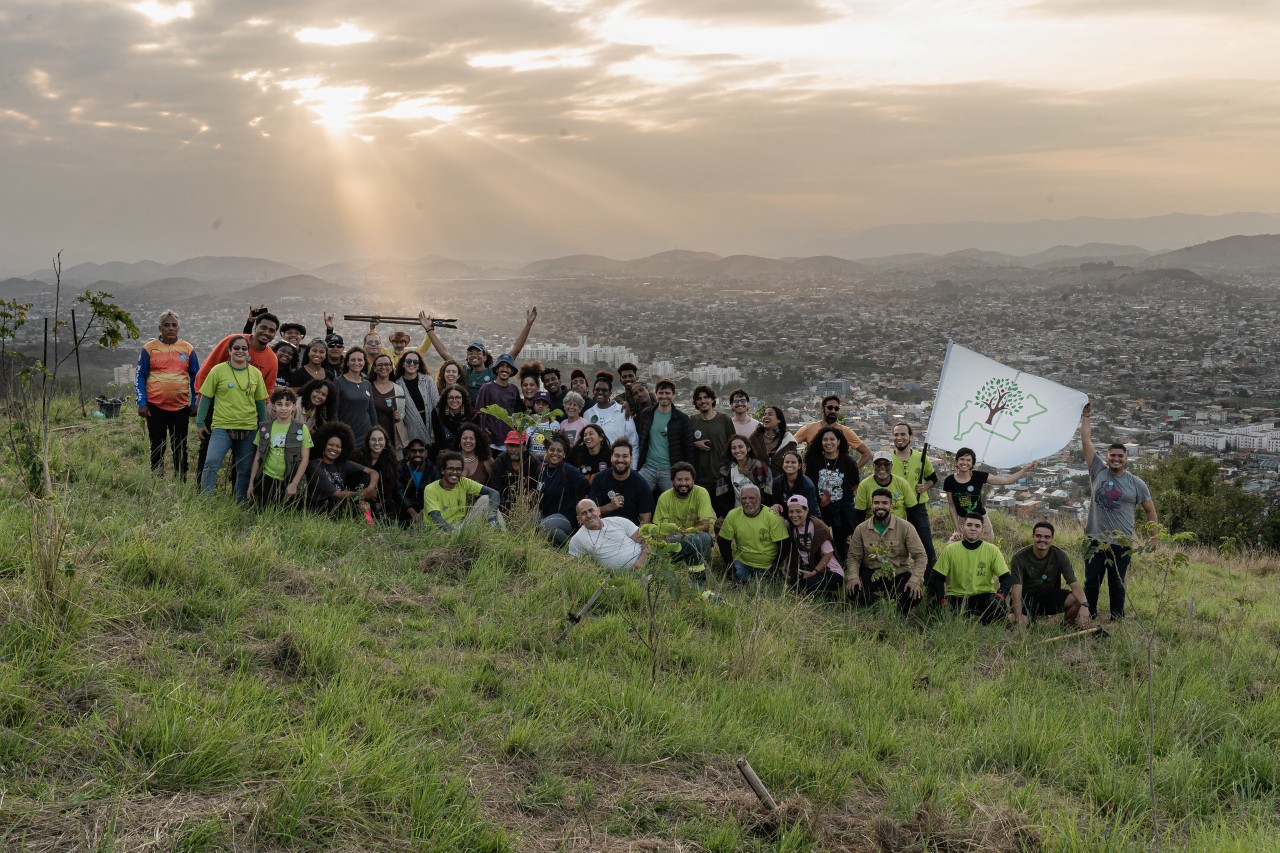Community unites in reforestation mutirão, planting 60 trees in Serra do Vulcão
This precious stretch of the Atlantic Forest is located in Baixada Fluminense, Rio de Janeiro. The action involved the COP30 presidency, youth activists, farmers, scientists, volunteer firefighters, and other representatives of civil society

By Maiva D’Auria | COP30
The term Global Climate Mutirão (Global Collective Effort) was coined by the COP30 Presidency. While it has no direct translation into other languages, its essence is simple: bringing collective efforts together to strengthen multilateralism and recognize local communities as key actors in seeking solutions to climate challenges.
In this spirit, the Brazilian Presidency of the COP, the COP30 Youth Champion Ms. Marcele Oliveira, young activists, farmers, scientists, volunteer firefighters, and several environmental organizations came together this past weekend for the Reforestation Mutirão, organized by the EAE Institute (Environmental Education and Ecotourism) and the green tech startup Visão Coop. The gathering took place at Serra do Vulcão, one of the most valuable stretches of the Atlantic Forest in Baixada Fluminense, Rio de Janeiro.
A total of 60 native Atlantic Forest seedlings were planted, including species like aroeira, paineira, ipê-amarelo, pau-ferro, cajá-mirim, urucum, and mulungu.

Marcele Oliveira, a communicator and climate activist, emphasized that the concept of mutirão extends far beyond planting trees. "When we talk about a Global Climate Mutirão, we are recognizing local practices that protect nature and promote regeneration," she said. "This includes regenerative agriculture and daily climate education. It's very different from international negotiations, which can sometimes feel distant from people’s reality. The word mutirão is deeply connected with people."
According to Oliveira, the call for a Global Mutirão is to involve more diverse groups in building climate solutions, not only at the international level but also nationally, in municipalities, schools, and local communities.
She also highlighted the importance of giving visibility to grassroots initiatives. "Projects like this exist in many parts of the world, but authorities often don’t see them, don’t fund them, and don’t support them," she explained. "Imagine if more attention were given to this. I've seen my country come off the hunger map twice, and now I want to see it come off the climate risk map."

The journey to the planting site began with off-road buggies that transported participants to the Cabana do Vulcão. There, the EAE Institute presented the #ElesQueimamNósPlantamos ("They Burn, We Plant") movement. Since 2018, this initiative has organized dozens of mutirões to create what is now known as the Forest of Belonging, which has over 7,000 seedlings planted so far. The project also addresses environmental racism by training firefighters and organizing volunteer actions to combat forest fires.
During the trek, participants walked through burned areas, witnessing firsthand the impacts of environmental destruction. This program effectively combined direct action, citizen science, and cultural activity.
For Denner Noia, a project mobilizer at Visão Coop and a resident of Complexo do Alemão in Rio de Janeiro, these initiatives are most impactful when they are rooted in the perspective of the community. "We can offer a model that considers the territory and its residents as the primary source of information and intervention priorities," he explained. "Public policy traditionally comes from a top-down approach, and that hasn’t worked well. We want to reverse that logic and bring demands from the community to public authorities to shape effective public policies."
Noia also had a direct message for global leaders at COP. "Pay close attention to the communities, because there is amazing work happening here. If we strengthen the initiatives already underway, we’ll have a much greater chance of success than with miraculous innovations that ignore the particularities of each community and each people."

Youth also played a central role in the mutirão. For Mr. Luan Cazati, 21, an International Relations student, member of the NGO Conjuclima, and climate activist since the age of 16, collective thinking is the essence of the mutirão.
“When we gather in a mountain range like Serra do Vulcão to plant trees, we are planting hope. We are part of a generation that tries to postpone the end of the world with small, local efforts,” he said.
Youth played a central role in the mutirão. Luan Cazati, a 21-year-old International Relations student, member of the NGO Conjuclima, and climate activist since age 16, believes that collective action is the essence of the mutirão. "When we gather in a mountain range like Serra do Vulcão to plant trees, we are planting hope," he said. "We are part of a generation that is trying to postpone the end of the world with small, local efforts."
He also stressed the urgency of amplifying the voices of new generations. "Enough! We are no longer the future. We are the present, and we are trying to pause a climate crisis we did not start. The COP30 mutirão is an initiative that brings together youth, older people, community leaders, and world leaders to forge a common consensus: everyone needs to unite to try to stop the climate crisis."
